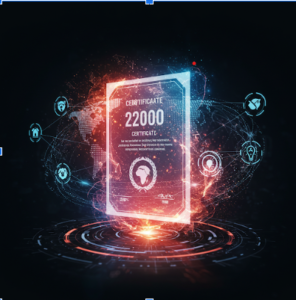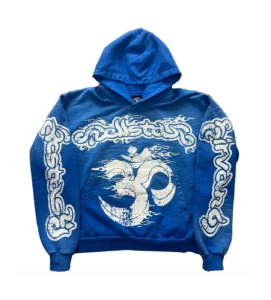Introduction
Visible Light Communication (VLC) is emerging as a disruptive technology revolutionizing wireless communications by harnessing visible light waves for data transmission. Unlike traditional radio frequency (RF)-based systems such as Wi-Fi, VLC offers unparalleled data transfer speeds, enhanced security, and interference-free communication—qualities that make it especially attractive for environments sensitive to electromagnetic interference. In 2025, VLC adoption is expanding rapidly across smart cities, healthcare, consumer electronics, and transportation sectors.
Growth Forecast and Industry Projection
According to Straits Research, the global visible light communication industry was valued at USD 52.83 billion in 2024 and is expected to increase from USD 88.46 billion in 2025 to an astounding USD 5467.8 billion by 2033, growing at an exceptional CAGR of 67.45% during the forecast period (2025–2033). This explosive growth is driven by VLC’s ability to deliver high-speed, secure, and sustainable communication solutions that address the challenges posed by emerging IoT, 5G networks, and smart lighting applications.
Key Players and Country-Wise Analysis
-
United States: Ongoing advances from companies like Signify (formerly Philips Lighting) and Velmenni are expanding VLC applications in indoor positioning, smart offices, and industrial automation. US tech startups focus on hybrid Li-Fi solutions merging visible light and RF communications for ultra-fast connectivity.
-
Europe: Philips Lighting drives European VLC deployments supported by EU-backed smart city initiatives embedding VLC into urban infrastructure. Companies in Germany and the UK focus on VLC for healthcare and retail sectors, emphasizing safer communication where RF interference is critical.
-
Asia-Pacific: India’s Oxyfresh and Chinese companies such as Lucibel and PureLiFi lead VLC hardware and software innovation, targeting high-density urban areas with IoT-integrated solutions. Japan’s focus is on VLC in automotive and public transportation communication systems.
-
Middle East & Africa: The region is in the early stages of VLC adoption, leveraging partnerships to deploy VLC as part of smart infrastructure and secure communication projects.
Emerging Trends and Technological Innovations
-
High-Speed Data Transmission: VLC systems leverage LEDs and advanced modulation techniques enabling multi-Gbps data rates, exceeding typical challenges of RF congestion and latency.
-
Hybrid Connectivity Networks: Combining VLC with Wi-Fi and 5G enhances coverage and reliability, particularly in indoor and urban micro-environments.
-
Smart Lighting as Communication Infrastructure: LED lighting doubles as data transmitters, advancing ‘Light as a Service’ models while maintaining energy efficiency and illumination quality.
-
VLC in Healthcare and Sensitive Environments: VLC’s inability to interfere with medical devices and safety systems makes it ideal for hospitals, chemical plants, and other electromagnetically sensitive locations.
-
Vehicle and Transport Communication: VLC-enabled vehicle-to-vehicle and vehicle-to-infrastructure communication improves road safety and traffic efficiency through real-time data exchange at traffic signals and dynamic alerts.
Recent Industry News and Developments
-
Signify introduced innovative Philips Li-Fi modules in early 2025, enabling dual-function lighting and data communication suitable for smart office and industrial applications.
-
In May 2025, Velmenni announced a breakthrough in multiplexed VLC, achieving multi-Gbps data rates over extended distances in complex indoor environments.
-
Lucibel expanded its VLC pilot projects in Chinese smart cities, integrating with public Wi-Fi and IoT gateways for seamless mixed connectivity.
-
Philips Lighting signed contracts with major European cities for large-scale VLC smart lighting infrastructure supporting IoT applications.
-
India’s Oxyfresh launched hybrid VLC-Wi-Fi products targeting retail and building automation sectors with enhanced secure communication.
Regional Focus and Market Dynamics
North America and Europe lead in research, large-scale deployments, and smart city integration. Asia-Pacific shows the most rapid growth reflecting government initiatives for digital infrastructure and IoT proliferation. Early adopters in Middle East and Africa focus on VLC’s niche applications in sensitive public spaces and smart transport systems.
Future Outlook
Visible Light Communication is set to become a backbone of intelligent urban and industrial wireless networks by 2033 due to its robustness, speed, and energy efficiency. The technology will be pivotal for overcoming RF congestion, enabling seamless IoT connectivity, and ensuring data security in the era of 5G and beyond. Strategic collaborations between lighting, telecom, and semiconductor industries will accelerate VLC commercialization globally.
Summary (3 lines)
Visible Light Communication is emerging as a high-speed, secure wireless alternative for IoT, smart lighting, and transport sectors. Leading global innovators drive adoption through groundbreaking hardware and hybrid connectivity models. The technology’s immense growth potential positions VLC as a future pillar of digital communication infrastructure.





